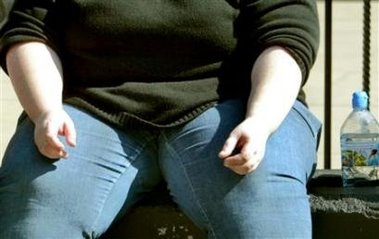But if you read the article its more about the medical equipment, and not the people. Change the equipment and the size of the folks won't matter.
Most of the problems are with PET, MRIs and CT scan machines. These are frightful little claustrophobia causing capsules, it wouldn't take a grotesquely obese person to be discomfitted sliding into one of these. Ultrasounds are also problematic, but that's due to the nature of fatty tissue and its similarity to other tissues when imaged by an ultrasound.
There's also a CYA angle going on here, "Radiologists have their own term for it when writing up reports: "These images are limited due to body habitus."" In other words, when in doubt, punt, if there is any doubt in the diagnosis claim you couldn't tell what was going on cause of the patient, make it harder to prove malpractice.
Now with the headline you'd assume that 1 out of 5, or 1 out of 4 patients are leading to descriptions of causing limited images, but the number quoted in the article
"Overall, 7,778 or 0.15 percent of 5,253,014 reports were habitus limited," they wrote in the August issue of the journal Radiology.
"It essentially doubled over the last 15 years," Uppot said.
This is what they're complaining about? .15%?!? 64% of Americans (according to the article, but that's partly due to the lowering of the bar of what qualifies as overweight as well as too much fast food) are overweight yet only .15% of scans are screwed due to this lardassedness. I find it harder to believe that only .075% of patients ran into this problem 15 years ago, there were plenty of lardasses back in 1991, too.
The doubling in rate of reporting of this might be entirely due to cautious radiologist covering their asses, and nothing to do with American lardassedness.
Part of my reasoning for believing that back in the day X-rays were more powerful is because attitudes regarding exposure to radiation were very different than today. No lead blankets for your gonads or ovaries, and my father even relates tales of using X-rays at shoe stores to help get the proper fit on children's shoes!
(I'm guessing if they did that for non-medical purposes, then the medical ones probably were strong enough to see through half the building, let alone the tubby fella parked in front of it)
The usual headless fat person photo accompanies the article. All articles regarding obesity, as well as all TV news feeds feature b-roll of headless fat people waddling by the camera.

In this case the headless fat person is described as, " An overweight pedestrian sits on a wall outside the Houses of Parliament in London, March 31, 2004".
I don't know why I find that kind of funny, but I do.
What I'm really trying to say, science/health reporting in the media, really, really sucks.
No comments:
Post a Comment